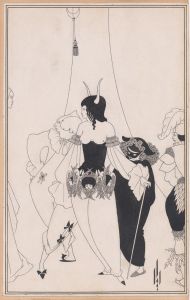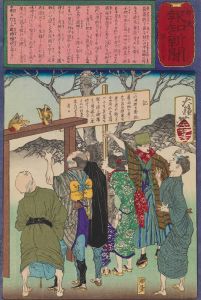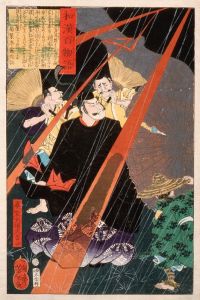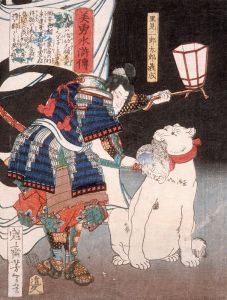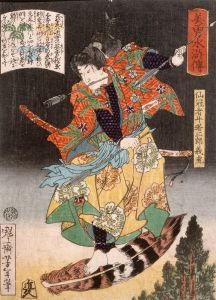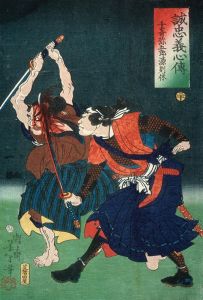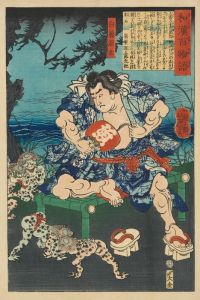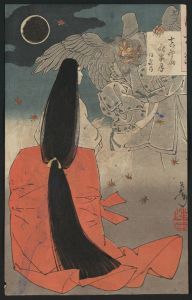
Kurokumo Ōji Attacked by a Giant Spider
A hand-painted replica of Tsukioka Yoshitoshi’s masterpiece Kurokumo Ōji Attacked by a Giant Spider, meticulously crafted by professional artists to capture the true essence of the original. Each piece is created with museum-quality canvas and rare mineral pigments, carefully painted by experienced artists with delicate brushstrokes and rich, layered colors to perfectly recreate the texture of the original artwork. Unlike machine-printed reproductions, this hand-painted version brings the painting to life, infused with the artist’s emotions and skill in every stroke. Whether for personal collection or home decoration, it instantly elevates the artistic atmosphere of any space.
Tsukioka Yoshitoshi (1839–1892) was a prominent Japanese ukiyo-e artist, known for his innovative and dramatic style, which often depicted historical scenes, supernatural themes, and the complexities of human emotion. One of his notable works is "Kurokumo Ōji Attacked by a Giant Spider," which reflects his fascination with Japanese folklore and the supernatural.
"Kurokumo Ōji Attacked by a Giant Spider" is part of Yoshitoshi's series "New Forms of Thirty-Six Ghosts" (Shinkei Sanjūrokkaisen), which he created towards the end of his career. This series, produced between 1889 and 1892, showcases Yoshitoshi's mature style and his ability to blend traditional ukiyo-e techniques with more modern and expressive elements. The series is celebrated for its imaginative portrayal of ghost stories, legends, and myths from Japanese culture.
The print "Kurokumo Ōji Attacked by a Giant Spider" illustrates a scene from Japanese folklore involving a mythical creature. In the image, Kurokumo Ōji, a character whose name translates to "Prince of the Black Clouds," is depicted in a dramatic confrontation with a giant spider. The spider, a common motif in Japanese mythology, often symbolizes entrapment and danger, and its depiction in this artwork highlights the tension and drama typical of Yoshitoshi's ghost series.
Yoshitoshi's work is characterized by its dynamic composition and vivid use of color, which are evident in this print. The artist employs bold lines and intricate details to bring the scene to life, capturing the viewer's attention and evoking a sense of suspense and intrigue. The contrast between the human figure and the monstrous spider emphasizes the theme of man versus nature, a recurring motif in folklore and art.
The "New Forms of Thirty-Six Ghosts" series, including "Kurokumo Ōji Attacked by a Giant Spider," is significant not only for its artistic merit but also for its cultural importance. It reflects the Meiji period's interest in preserving traditional Japanese stories while also embracing new artistic influences. Yoshitoshi's work during this time is seen as a bridge between the classical ukiyo-e style and the modern era, showcasing his adaptability and creativity.
Yoshitoshi's prints were produced using traditional woodblock printing techniques, a hallmark of ukiyo-e art. This method involves carving an image into a wooden block, applying ink, and pressing it onto paper. Despite the labor-intensive process, Yoshitoshi's prints are known for their precision and clarity, qualities that are evident in the detailed rendering of "Kurokumo Ōji Attacked by a Giant Spider."
Today, Tsukioka Yoshitoshi is regarded as one of the last great masters of ukiyo-e, and his works continue to be studied and admired for their artistic and historical significance. "Kurokumo Ōji Attacked by a Giant Spider" remains a testament to his skill in storytelling through visual art and his ability to capture the imagination of his audience with scenes of the supernatural and the fantastical.





